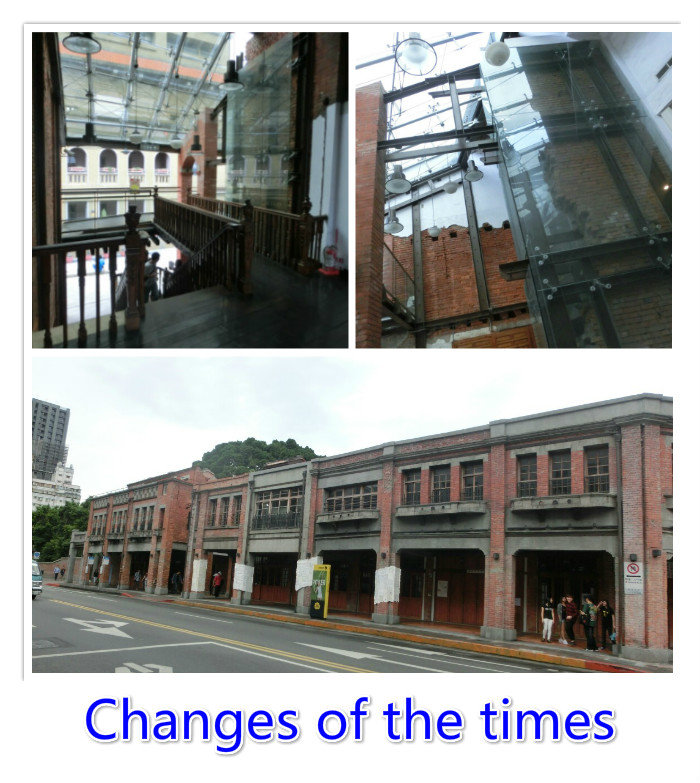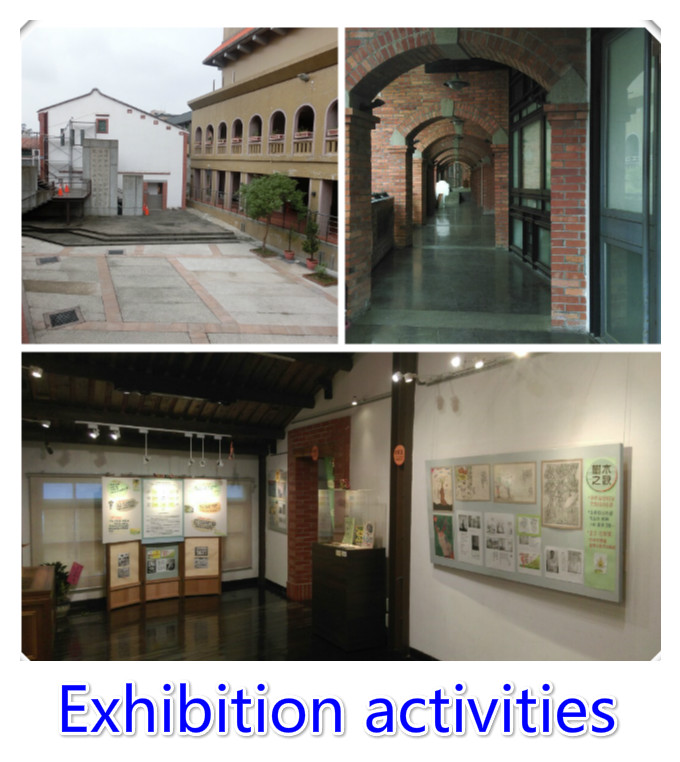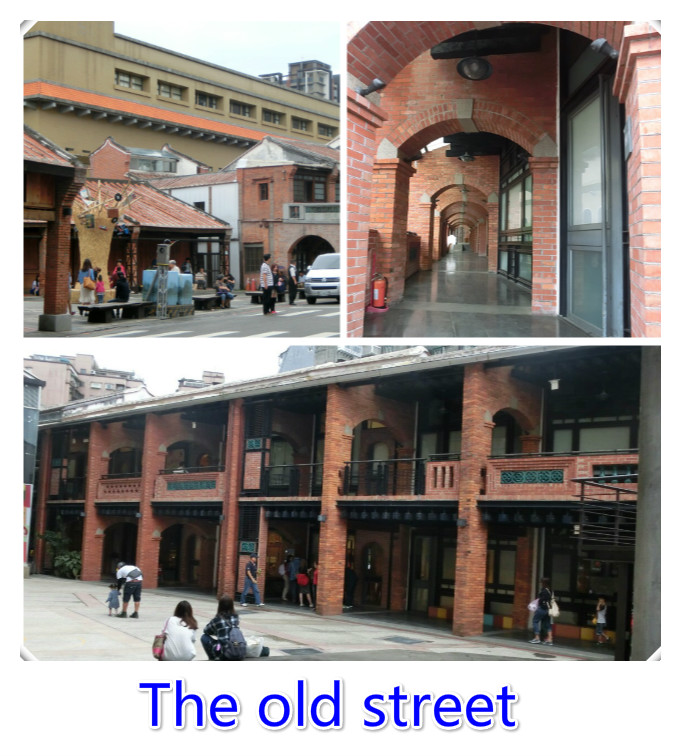

Located in Kangding Road, Guanzhou Street and Kunming Street in Wanhua District, Taipei, the historic district of Bo-Pi Liao preserves its Qing-styled streets, traditional Qing store houses, facades reconstructed during the Japanese Rule Era, and the reformed appearance afterwards. Architectures and spatial design in Bo-Pi Liao demonstrate traces of Mengjia’s development, and play an important role at preserving the city’s texture. Its rich history and culture, as well as the life style of its residents are of important conservation and educational value. In particular, many historic landmarks could be found inside the district, including Chang-Tai-Yan's Residence in Taiwan, Yongxing Ting trading company, Song Xiexin Rice Shop, Dr. Asho Ro's House, the Japanese-style Rixiang Inn, 3 Sun Binding Shop run by three generations, Xiuying Tea Shop, Changshou Tea Shop, the Taoist Weiling Altar, Fengxiang Bathhouse, together with the nearby Longshan Temple and shops selling spirit money, Chinese medicine, herbs and Buddhist implements. Bo-Pi Liao historic district is enriched by ample native cultures, and therefore, is the best place to learn about local lives. (Source: Heritage and Culture Education Center of Taipei) How to rescue damaged historic heritages
In Taiwan, the competent authority should set up complete files regarding the investigation, research, preservation, maintenance, restoration and reuse of all monuments, historic buildings and settlements. In terms of preservation and maintenance, Article 21 of the Cultural Heritage Preservation Act should be the main principle: “Monuments shall be preserved in their original appearance and construction method. In the event that a monument is destroyed or damaged, but its main structure and materials survive, repairs shall be made in accordance with its original appearance. Depending upon its particular characteristics, the owner, user and manager of the said site may submit a proposal to adopt appropriate methods of repair or reuse of the said site upon receiving the approval by the competent authority. The repair plan referred to in the preceding paragraph may include, if necessary, modern technologies and construction methods in order to enhance the Monument’s resistance to earthquake, natural disasters, flood, termite and its durability.
The main concerns of preservation and maintenance of historic buildings and cultural assets should be authenticity and historicity, namely, carrying out maintenance plans without damaging their main features. There are many different approaches to the preservation and maintenance of architectural assets, but the perception and evaluation of their value is the fundamental task of conservation of cultural assets. Any further action for maintenance and reuse should not diminish their value as a cultural asset. This value has to be constantly examined and evaluated, to ensure that it could be preserved correctly.
Along with the changes in times, there are not many historic buildings with conservation value that are left, and it is also not possible for us to preserve them all. Therefore, we really should properly preserve and maintain the heritages that have survived both natural and man-made disasters. These heritages not only allow us to learn about techniques and aesthetics of the past, but also to study the technical and aesthetic transformation of human beings..
Preservation of cultural assets
Historic districts mark traces of people’s lives from earlier times, serving as a bridge of history and culture education. The purpose of maintenance is to care about places with a cultural value, and the structure, materials and cultural significance of buildings in these places, as well as to educate current and future generations. Cultural assets reflect social conditions of different times, and embody a collective memory of our lives. If people could only learn about the past with recollections, rather than experiencing in person the space and cultural heritages, the knowledge would be abstract, unreal, and only made of memories, existing in each individual’s own imagination and disappearing along time. Preserving historic heritages means that we care about the past, and while protecting the heritages from being damaged, we will therefore, cherish more our current life.
Remains and cultural heritages left from the Qing period or the Japanese Rule Era allow us to understand the origin and transformation of our culture. Architectures and other evidences need to be preserved for us to connect the past, the present and the future. If historic values are sacrificed because of developments, it would be a great loss for future generations, since they will never be able to witness the beauty of these architectures and to learn about the changes of times. However, the maintenance of historic districts often collides with the speedy urban development. Many precious natural resources and landscapes have been abused or even destroyed in the name of economic development. Preservation and maintenance are necessary. From any perspective, from cultural, educational, historic, artistic, architectural environmental, scientific, social, archeological, anthropological to ethnographic, the conservation of history and culture should not be neglected. Historic heritages symbolize the accumulation of our civilization and cultures, so to preserve former is to document the latter.
On the international level, the conservation of cultural assets was institutionalized in the 1980s. The Convention Concerning the Protection of the World Cultural and Natural Heritage was adopted by United Nations Educational, Scientific and Cultural Organization (UNESCO) in 1972. The United Kingdom passed the “National Heritage Acts” in 1980, and Taiwan also started the implementation of “Cultural Heritage Preservation Act” on May 26th, 1982. More and more countries started to value local cultures and the preservation of historical remains, allowing their 21citizens to learn about their past. Based on the spirit of the “Convention Concerning the Protection of the World Cultural and Natural Heritage,” the most important cultural and natural heritages are the assets given to us by our ancestors, and they are the shared properties of the entire human race, which should be well protected and passed on to our offspring. Importance of preservation and reuse
Many countries consider cultural assets as priceless treasures that should be cherished and protected. The purposes of preservation and reuse are to extend the history, to protect our roots for future generations, to introduce to other countries the value of our history and culture, as well as to make the best use of the these architectural and cultural assets.
The best way to preserve architectural and cultural assets is to allow them to be used continuously. For example, it is worth noting that European countries, China and Japan all seek to promote their history and culture to global citizens, as a type of cultural consumption of past lives, as valuable assets that improve their reputation and attract tourists, and as a pollutionless green industry. In Taiwan, however, the concept of preserving and maintaining historic sites, architectural and cultural assets is not common, and the implementation is far from ideal. The popular movie “Monga” once attracted many visitors to Bo-Pi Liao; however, as the fever died down, the crowd also disappear. Right now, there is still much empty space in Bo-Pi Liao.
Through field visit, document review, and case study, we propose the following suggestions for a sustainable management of the historic district:
1. Reutilization and effective management are needed to revitalize a sustainable development of Bo-Pi Liao historic district. In terms of space use, exhibitions on traditional art performances could be set up regularly in eastern Bo-Pi Liao. In western Bo-Pi Liao, events about traditional industries, skills and art activities could be organized. Street performances on weekends and holidays could attract tourists, while exhibitions and activities by local cultural industries could be arranged to encourage a more flexible use of space. Also, new facilities could be added, giving the cultural and architectural assets an opportunity of rebirth. Information should be provided using multiple channels, so that the reuse of historic buildings could attract more attention, achieving the objective of preservation and reutilization. 2. Among countries that have a more active attitude towards cultural assets, the latest trend is to treat the maintenance of cultural assets of space and buildings as an environmental policy, namely, a part of urban planning. To consider how to improve local citizens’ life quality and cultural experiences through space reutilization and cultural and architectural assets, the competent authority could promote its features, history and culture to other cities or counties, in order to attract more tourists, rather than simply displaying the preserved site. This historic site and the important cultural assets within, which have been preserved thanks to decades of protests by local residents, could be reused and given a higher value by creating a new opportunity that incorporates both the new and the old. By combining it with local lives, a better place that includes the past, the present and the future could be created. . Important International Charters Concerning the Preservation of Historic Heritage
|




